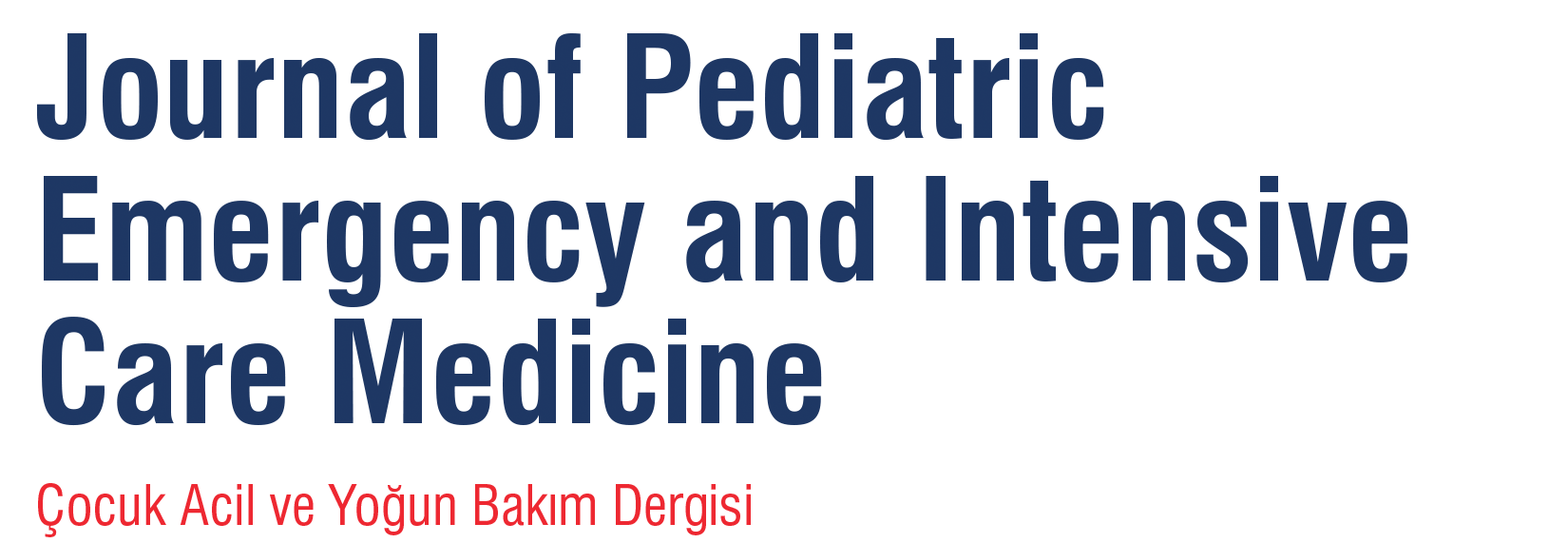ABSTRACT
Introduction:
Pigtail catheters are currently recommended for draining pleural effusions. However, specific catheters manufactured for this purpose may not be feasible in resource-limited settings. This study evaluated the safety and effectiveness of a central venous catheter for treating uncomplicated pleural effusions with point-of-care ultrasound in children.
Methods:
The study was a single-center retrospective review of the clinical records of pediatric patients with symptomatic uncomplicated pleural effusion who had underwent bed-side ultrasound guided pleural drainage with a central venous catheter, between 2014 and 2019.
Results:
We determined 93 patients who had undergone 98 central venous catheter insertions during the study period. The patient’s median age was 4.5 years (range, 7 days to 15 years) and median weight was 19 kg (range, 3 to 60 kg). The most underlying cause was cardiovascular surgery. The technical success rate was 95.9% and only 2 (2.2%) complications were observed.
Conclusion:
Point of care ultrasound guided pleural drainage with a central venous catheter is safe and effective in critically ill children with uncomplicated pleural effusion.
Introduction
Pleural effusion (PE) is a significant morbidity and is frequently caused by infections, cardiac failure, volume overload, heart-liver surgery, and trauma in pediatric critically ill patients.1 Indeed, PE impinge on lung volumes, impact gas exchange resulting in hypoventilation and hypoxemia.2 Drainage by varying techniques improve oxygenation, lung mechanics and compliance by enhancing the ventilation: Perfusion ratio.3
Rapid diagnosis of the effusion and determining the nature are crucial for the best therapeutic choice. Point of care ultrasound (POCUS) is a non-invasive bedside tool for diagnosis and procedural guidance, by the clinician himself, at the point of care, in real time allowing for direct correlation with signs and symptoms. Many studies have shown that lung ultrasound has better diagnostic accuracy over the chest X-ray for the diagnosis of PEs.4,5 Furthermore, the amount and nature of the PE can be established by lung ultrasound.6 Although pleural fluid volume can be estimated using sonographic measurements, these formulas are uncommonly used in clinical practice. A qualitative assessment is adequate for most clinical decision making. According to sonographic view, PEs are categorized as simple or complex. Simple effusions are anechoic and typically transudative. Complex PEs are heterogeneously echogenic, with or without septations and often exudative.7
Although large bore chest tubes provide effective treatment, it may cause pain and incision infection.8 Pleural drainage with specific pigtail catheters is much safer than repeated thoracentesis and large bore chest tubes inserted by blunt dissection. Pigtail catheters have over 90% success rate and less than 5% complication rate in pleural drainage.9-12 Also, many studies have shown that the use of POCUS during pigtail insertion increases the success rate and decreases the complication rate.11,12
Despite the success of pigtail catheters, we investigated the treatment of simple PE by closed thoracic drainage using a central venous catheter (CVC) instead of traditional large bore chest tubes. The aim of this study was to evaluate the efficacy and safety of using a CVC in the treatment of simple PE in resource limited settings.
Materials and Methods
Patients
We reviewed all CVC insertions performed for pleural drainage between 2014 and 2019 in a pediatric intensive care unit of a tertiary medical center. The indications for pleural drainage with a CVC were inability to wean from mechanical ventilation, high ventilator settings, and non-purulent effusions over 20 mm on ultrasound. A plateau pressure over 28 cm H2O and a maximum inspiratory pressure over 30 cm H2O were considered as “high ventilator settings”. Patients with purulent effusions on ultrasound were excluded. A total of 93 patients who underwent pleural drainage with a CVC using POCUS guided Seldinger technique included in this study. This study was conducted in accordance with the amended Declaration of Helsinki and approved by the Local Ethical Committee of Dokuz Eylül University (4721-GOA/2019/11-37).
Procedure
All patients were sedated with midazolam and fentanyl before the procedure, and local anesthesia was provided with lidocaine. The catheter size was determined according to the patient size. Braun CertoFix, double lumen 5 Fr-13 cm (patients under 30 kg) and double lumen 7 Fr-20 cm (patients over 30 kg) CVCs inserted under full aseptic conditions. In the supine position with ultrasound guidance, the needle was inserted into the pleural space from 4th or 5th intercostal space midaxillary line. After aspiration of the pleural fluid, soft guidewire was inserted into the needle about 10 cm in length. While holding the guidewire in, the needle was removed and a stiff dilatator used to enlarge the entry route. After removal of the dilatator, CVC was put into the pleural space over the guidewire. The guidewire was removed and CVC sutured on the chest wall and connected to the standard thoracic drainage systems. The position of the catheter was confirmed with thoracic ultrasound and chest X-ray (Figure 1).
Adequate drainage and resolution of the effusion (confirmed by daily bedside thoracic ultrasound and chest X-ray) were defined as successful intervention and persistence or increasing PE or requiring another intervention defined as unsuccessful intervention. Pneumothorax, hemothorax, and pulmonary edema were accepted as complications.
Statistical Analysis
Statistical analysis was performed using SPSS software version 22.0 (SPSS, Chicago, IL) for Windows. The demographic characteristics, primary diagnosis, success and complication rates of the patients were summarized using standard descriptive statistics. The amount of effusion and drainage time were defined as mean (± standard deviation) and categorical data was defined as frequency (percentage).
Results
During the study period, 93 patients had 98 insertions. While the most common underlying disease was post-operative follow-up, the most common indication for pleural drainage was inability to wean from mechanical ventilation (Table 1). All pleural fluid analysis showed transudative properties on the biochemical analysis. Of them, 98 CVC insertions, 4 (4.4%) procedures were unsuccessful (two patients had pneumothorax after the procedure and two patients had insufficient drainage) and needed large bore-chest tube insertion (Table 2). Among the insertions, 12 (12.2%) had inadequate drainage from the main lumen and required the use of the second line, however 2 of them could not achieve adequate drainage despite using both lumens. The mean intervention time was 4.4±1.5 min, 5 of them (5.1%) required sedation and analgesia dose increase, and wound infection was not observed in any of the patients.
Discussion
Large bore chest tubes have traditionally been recommended in almost all cases to treat various pleural diseases requiring large skin incision, blunt dissection and insertion. Small bore catheter insertion using the Seldinger technique is a much easier and less invasive method than traditional large bore tubes.12,13 Consequently, specially developed chest drains “pigtails” are recommended due to high complication rates of large bore chest tubes.14
In 1986, Fuhrman et al.15 introduced pigtail catheter insertion with the Seldinger technique for pleural space diseases. And in 1989, Lawless et al.16 assessed the method in a prospective interventional study of 16 pediatric patients and demonstrated successful drainage of air and fluid without any complication. Subsequently, Roberts et al.17 inserted pigtail catheters in pediatric patients who have chylothorax, serious fluid, hemothorax with a success rate of 96%, 72% and 81% respectively. Over the past two decades, pleural drainage with small catheters shown that they have high success rates with lower complication rates on different studies.12,18
As POCUS becomes widespread in pediatric intensive care units, thus physicians had the chance to provide interventions under ultrasound guidance to reduce complications and increase success rate.19 Sonographic guidance enables visualization of the needle insertion to the pleural space and is associated with a reduced risk of complications such as pneumothorax. An adult study demonstrated that ultrasound guided thoracentesis reduced pneumothorax incidence from 8.89% to 0.97% in 445 procedures.20
All data propose specially designed pigtail catheters and there are only two studies had evaluated CVC for pleural drainage. First, Singh et al.21 used 15 CVC insertions to drain PEs in adult patients and they have 100% success rate without any complications. Shwaihet and Ingram22 evaluated double lumen CVCs for the drainage of uncomplicated PEs in pediatric post cardiac patients. They had 47 patients included in the study, one case (2.1%) had pneumothorax on insertion, three cases (6.38%) had a line dislodgement and one case (2.1%) had line blockage during the follow-up period. In our study, we used double lumen catheters, which allowed us to use another line if the main lumen was blocked.
Since there are publications showing the success of a CVC in the treatment of pneumothorax,23,24 we started using a CVC for pleural drainage, considering that it may be less invasive compared to large bore chest tubes and can provide adequate pleural drainage especially in transudative fluids. We knew we had to use specially manufactured pigtail catheters; however, limited availability of pigtail catheters led us to perform pleural drainage using CVC. Also, CVCs have small caliber and clinicians may be concerned about obstruction. Although considerably thinner than traditional chest tubes, CVCs are made from polyurethane with excellent biocompatibility. In our study, we had a high success rate and no obstruction were observed. If a catheter occlusion does occur, it can be easily removed by flushing with serum physiologic.
Our data revealed many advantages of using ultrasound guided pleural drainage with a CVC. We had 96.4% success rate on various etiologies with transudative PE’s and only two patients had pneumothorax during insertion and two needed another intervention due to inadequate drainage that suggested that this method is effective and safe in draining PE. Especially, ultrasound guidance and inserting double lumen catheters were the major key points of our study. We had a suspicion but higher awareness of our team and nurses about this procedure prevent us from mis-using lines and any medication was administered during follow-up. Finally, this procedure is considered as safe and effective like pigtail catheters under ultrasound guidance.
Study Limitations
There are some limitations of our study, first the study was retrospective and had a relatively small population. Also, we could not have the opportunity to compare CVCs with other techniques. Therefore, future comparative prospective studies with larger samples needed to compare CVCs against other techniques in pleural drainage. These studies would help in more reliable and powerful evidence.
Conclusion
Ultrasound-guided pleural drainage with the Seldinger technique using a CVC is a safe and effective method. There were less complications and high success rate. In the lack of pigtail catheters, CVCs should be used for treating simple PEs in PICU settings with a high success and low complication rates under ultrasound guidance.



